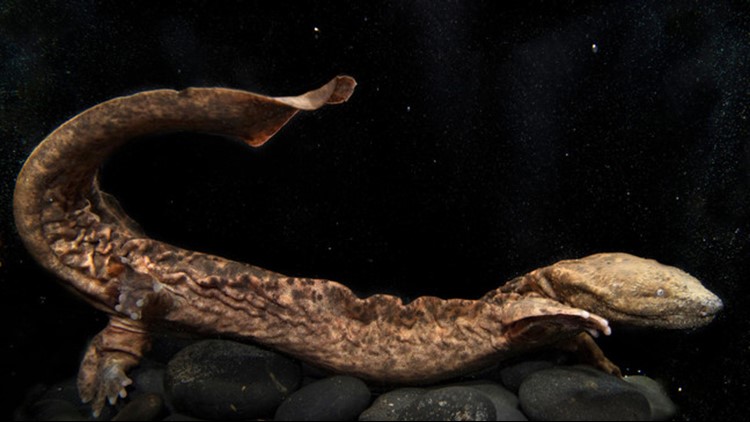NASHVILLE, Tenn. — The Hellbender, a state-endangered species, was recently re-introduced in Tennessee waterways.
They might just look like something out of another time, a 'modern-day dinosaur' if you will, and biologists say Hellbenders have been around for at least that long.
Growing to almost three feet long, the Hellbender is the largest salamander in North America. They breathe entirely through their skin: all of their oxygen comes into their body through folds on the side of the body.
Tennessee Wildlife Resources Agency (TWRA) says on its website that the Hellbender "has been described by some as grotesque and frightening." In reality, wildlife specialists say it's a gentle giant.
Hellbenders are endangered in Tennessee and it's a project six years in the making that was just launched to help the species.
TWRA and the Nashville Zoo with help from Tennessee State University (TSU) successfully released 29 zoo-raised eastern Hellbenders back into local waterways.
"With this slow decline over several decades, hellbenders had disappeared from most of their formerly extensive range in Tennessee," the zoo wrote in a blog post.
Through a headstart program, eggs from streams in Middle Tennessee were collected and the zoo raised the giant salamanders for six years until they were young adults.
Recently, team members waded into local waters to release the zoo-raised Hellbenders back into the wild.
The zoo says it hopes to continue to boost the Hellbender population and still has about 140 hellbenders in its Native Aquatic Conservation Center and plans to release them over the next few years as they grow up.
Once abundant in Tennessee, the Hellbender is now listed as "in need of management."
Hellbender Myth-Buster:
The most common myth about Hellbenders is that it has a " poisonous bite." However, TWRA says the truth is it's completely harmless.
So what can you expect if coming into contact with this creature in the wild?
Hellbenders are usually grayish, but can also be yellow-brown. They are nocturnal and search at night for small fish and crayfish. Tennesseans can find them in clean, fast-flowing streams and rivers, where large flat rocks provide plenty of cover from predators.



